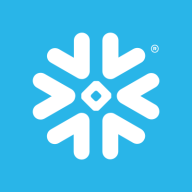

Snowflake and Oracle Database Appliance compete in the data management and warehousing category. Snowflake has the upper hand due to its scalability and flexibility.
Features: Snowflake offers a scalable, flexible architecture that allows seamless data management without hardware constraints. It excels at processing vast datasets, easily adjusting node sizes, and supporting diverse file formats. Snowflake's automatic micro-partitioning and time travel features enhance data recovery. Oracle Database Appliance provides a reliable, all-in-one solution with strong performance but is less scalable and flexible. Its engineered simplicity and robust performance are preferred in traditional setups.
Room for Improvement: Snowflake could improve its spatial and analytical functionalities, including better support for geo-spatial queries and analytics integration. Users seek pricing transparency and enhanced connector support. Oracle Database Appliance needs increased scalability and improved cloud-native service integration. Users note patching issues, require virtualization improvements, and express concerns over premium pricing, which might deter smaller businesses.
Ease of Deployment and Customer Service: Snowflake deploys in public and hybrid cloud models, offering flexibility for scalability and cloud-native integration. While its technical support is generally responsive, users suggest improving SLAs. Oracle Database Appliance is favored for rapid deployment due to its pre-engineered design, though limited by its fixed architecture. Customer support feedback is mostly positive, but there is a need for improved responsiveness and comprehensive services.
Pricing and ROI: Snowflake operates on a variable pricing model based on usage, appealing for flexibility, but budgeting upfront costs can be challenging. It offers competitive rates with notable ROI from cost-effective operations and potent features. Oracle Database Appliance presents higher costs justified by performance and stability benefits. While some have affordability concerns, particularly for smaller enterprises, its infrastructure solutions provide good ROI for those heavily investing in Oracle ecosystems.
I would rate Oracle support nine or ten out of ten because you can always open a ticket and describe any problems, and the feedback is very quick.
I received great support in migrating data to Snowflake, with quick responses and innovative solutions.
The technical support from Snowflake is very good, nice, and efficient.
All enterprise-grade analytics tools allow rapid scaling, making our business more competitive.
Snowflake is very scalable and has a dedicated team constantly improving the product.
The billing doubles with size increase, but processing does not necessarily speed up accordingly.
Snowflake is very stable, especially when used with AWS.
Snowflake as a SaaS offering means that maintenance isn't an issue for me.
There is room for improvement in better integration with third-party tools, such as Power BI or Redshift.
For the cloud version, there could be better storage options or more storage for lower prices.
Enhancements in user experience for data observability and quality checks would be beneficial, as these tasks currently require SQL coding, which might be challenging for some users.
Cost reduction is one area I would like Snowflake to improve.
Oracle is on the higher end of the pricing spectrum, along with SAP.
Snowflake's pricing is on the higher side.
Snowflake lacks transparency in estimating resource usage.
The automated provisioning feature helps speed up the database deployment process because you can use one command or option to resize all the disks or increase memory, depending on the occasion.
Oracle excels in providing actionable insights and flexible access to data.
One key feature is the separation of compute and storage, which eliminates storage limitations.
Being able to perform AI and Machine Learning in the same location as the data is quite advantageous.
| Product | Market Share (%) |
|---|---|
| Snowflake | 11.6% |
| Oracle Database Appliance | 5.2% |
| Other | 83.2% |


| Company Size | Count |
|---|---|
| Small Business | 20 |
| Midsize Enterprise | 9 |
| Large Enterprise | 15 |
| Company Size | Count |
|---|---|
| Small Business | 28 |
| Midsize Enterprise | 20 |
| Large Enterprise | 57 |
Oracle Database Appliance is the easiest and most affordable way for small or medium-size organizations to run Oracle databases and applications and is an ideal platform for remote and edge computing environments. Customers reduce Oracle Database deployment times and management workloads using a prebuilt integrated system with management automation. As demonstrated in IDC’s business value study (PDF), Oracle Database Appliance lets customers grow revenue and control costs, delivering up to a 498% return on investment (ROI) over five years.
Snowflake provides a modern data warehousing solution with features designed for seamless integration, scalability, and consumption-based pricing. It handles large datasets efficiently, making it a market leader for businesses migrating to the cloud.
Snowflake offers a flexible architecture that separates storage and compute resources, supporting efficient ETL jobs. Known for scalability and ease of use, it features built-in time zone conversion and robust data sharing capabilities. Its enhanced security, performance, and ability to handle semi-structured data are notable. Users suggest improvements in UI, pricing, on-premises integration, and data science functions, while calling for better transaction performance and machine learning capabilities. Users benefit from effective SQL querying, real-time analytics, and sharing options, supporting comprehensive data analysis with tools like Tableau and Power BI.
What are Snowflake's Key Features?In industries like finance, healthcare, and retail, Snowflake's flexible data warehousing and analytics capabilities facilitate cloud migration, streamline data storage, and allow organizations to consolidate data from multiple sources for advanced insights and AI-driven strategies. Its integration with analytics tools supports comprehensive data analysis and reporting tasks.
We monitor all Data Warehouse reviews to prevent fraudulent reviews and keep review quality high. We do not post reviews by company employees or direct competitors. We validate each review for authenticity via cross-reference with LinkedIn, and personal follow-up with the reviewer when necessary.